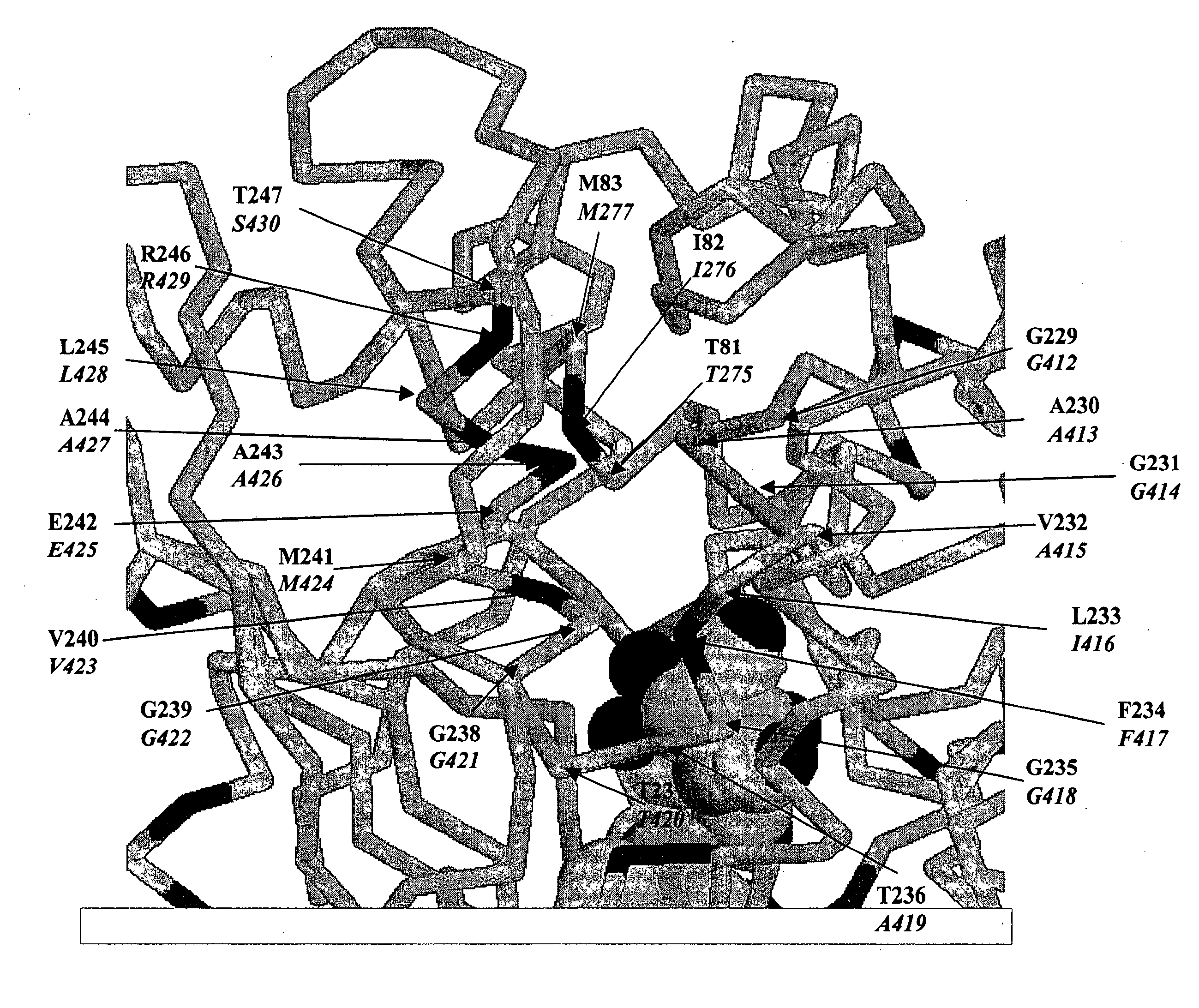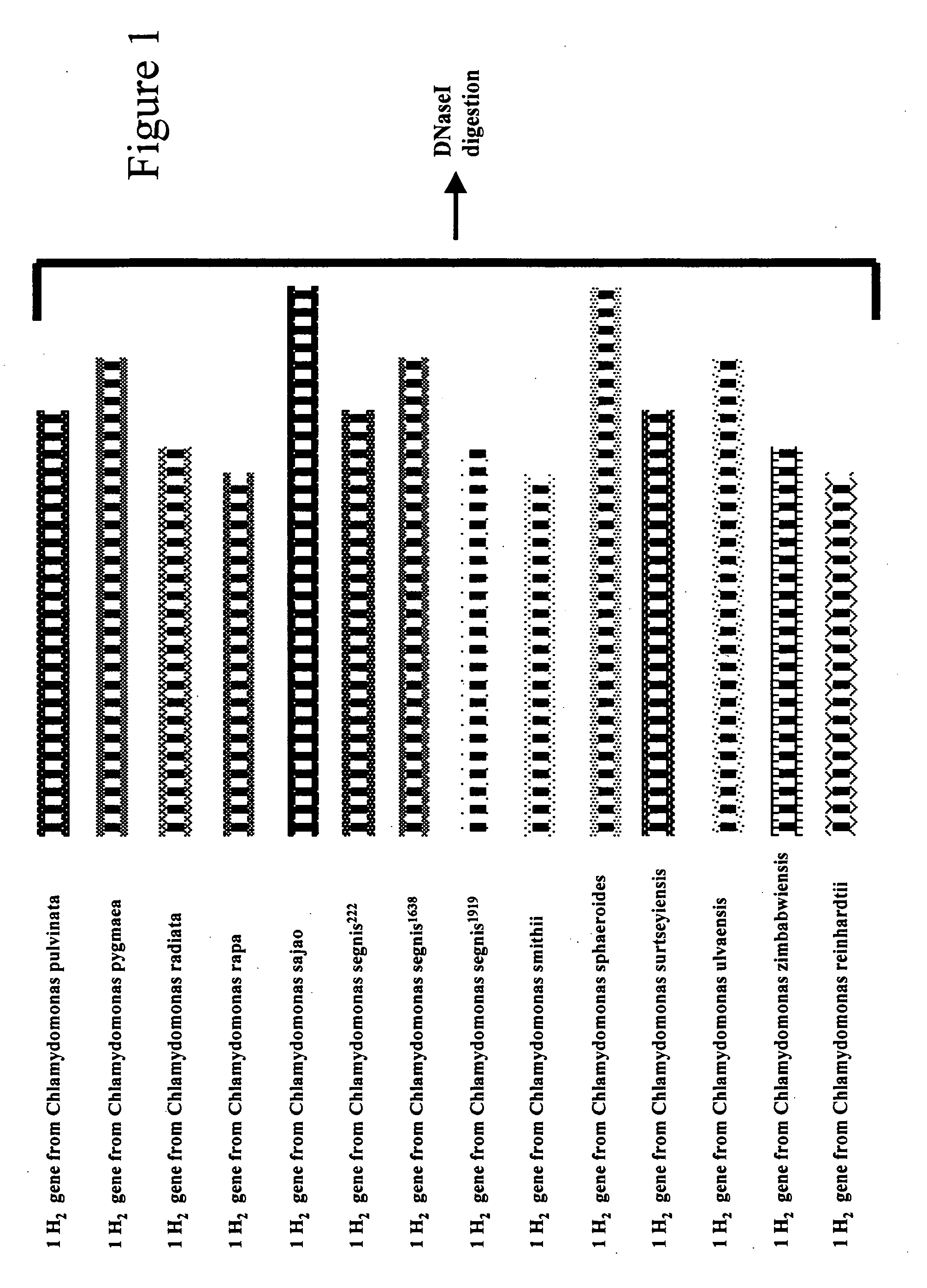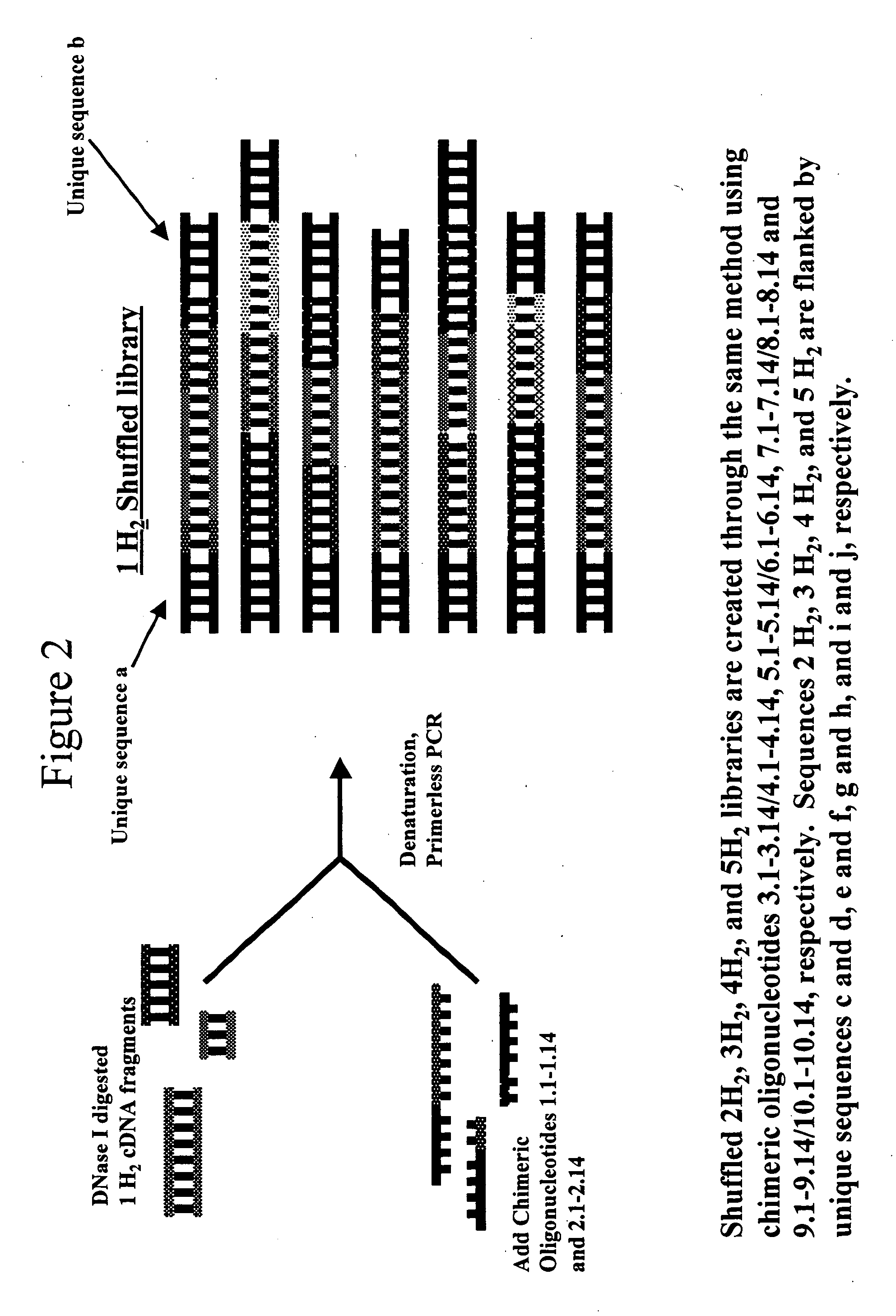Methods and compositions for evolving microbial hydrogen production
- Summary
- Abstract
- Description
- Claims
- Application Information
AI Technical Summary
Benefits of technology
Problems solved by technology
Method used
Image
Examples
example 1
[0127] Step 1: Sequence design: Unique sequences a-1 were searched for similarity to known sequences in the Chlamydomonas genome using the WU-Blast 2.0 program on databases of the Chlamydomonas Genome Project, located at (http: / / www.biology.duke.edu / chlamy_genome / blast / blast_form.html). The search produced no high scoring segment pairs. The following databases were searched: Contig Set, EST clones, S1D2 ESTs, Volvocales (non-EST), and BAC-ends (JGI). Searches were performed using the WU-blastn program using the default matrix blosum62. Gapped alignments were allowed for. The default expected threshold, filter, word length, and cutoff scores were used. The sum statistics option was used for assessing the significance of aligned pairs. Primer and chimeric oligonucleotide sequences were designed using sequences from the lhcb1 gene promoter (SEQ. ID NO 1), the 3′ untranslated region of the RBCS2 gene (SEQ. ID NO 3), and a selectable marker cassette (SEQ. ID NO 2).
[0128] Step 2: Culturi...
example 2
[0145] Step 1: Sequence design: Unique sequences a-h were searched for similarity to known sequences in the Chlamydomonas genome using the WU-Blast 2.0 program on databases of the Chlamydomonas Genome Project, located at (http: / / www.biology.duke.edu / chlamy_genome / blast / blast_form.html). The search produced no high scoring segment pairs. The following databases were searched: Contig Set, EST clones, S1D2 ESTs, Volvocales (non-EST), and BAC-ends (JGI). Searches were performed using the WU-blastn program using the default matrix blosum62. Gapped alignments were allowed for. The default expected threshold, filter, word length, and cutoff scores were used. The sum statistics option was used for assessing the significance of aligned pairs. Primer and chimeric oligonucleotide sequences were designed using sequences from the lhcb1 gene promoter (SEQ ID 148), the 3′ untranslated region of the RBCS2 gene (SEQ ID 150), and a green fluorescent protein gene (SEQ ID 179).
[0146] Step 2: Obtaining...
example 3
Multiparental Mating Protocol
[0158] 1. Place cells from 3 or more strains of algae capable of mating to each other such as Chliaydomonas reinhardtii together in the same tube, where at least one strain is of a different mating type than at least one other strain. For example, place approximately the same number of cells of the following strains into the tube: CC-124, CC-125, CC-1690, CC-1692, CC-407, CC-408, CC-1952, CC-2290, CC-2342, CC-2343, CC-2344, CC-2931, CC-2932, CC-2935, CC-2936, CC-2937, CC-2938, CC-2935, CC-2936, CC-2937, CC-2938, CC-3059, CC-3060, CC-3061, CC-3062, CC-3063, CC-3064, CC-3065, CC-3067, CC-3068, CC-3071, CC-3073, CC-3074, CC-3075, CC-3076, CC-3078, CC-3079, CC-3080, CC-3082, CC-3083, CC-3084, CC-3086, CC-1373 and CC-3087.
[0159] 2. Suspend the cells nitrogen free medium, such as Sueoka's medium without NH4Cl.
[0160] 3. Incubate in light, for 12 hours, or for 1 day, or 2 days, or 3 days, or 4 days, or for 5, 6, 7, 8, 9, 10, or more days, or for fractions of...
PUM
| Property | Measurement | Unit |
|---|---|---|
| Fraction | aaaaa | aaaaa |
| Fraction | aaaaa | aaaaa |
| Fraction | aaaaa | aaaaa |
Abstract
Description
Claims
Application Information
 Login to View More
Login to View More - R&D
- Intellectual Property
- Life Sciences
- Materials
- Tech Scout
- Unparalleled Data Quality
- Higher Quality Content
- 60% Fewer Hallucinations
Browse by: Latest US Patents, China's latest patents, Technical Efficacy Thesaurus, Application Domain, Technology Topic, Popular Technical Reports.
© 2025 PatSnap. All rights reserved.Legal|Privacy policy|Modern Slavery Act Transparency Statement|Sitemap|About US| Contact US: help@patsnap.com



